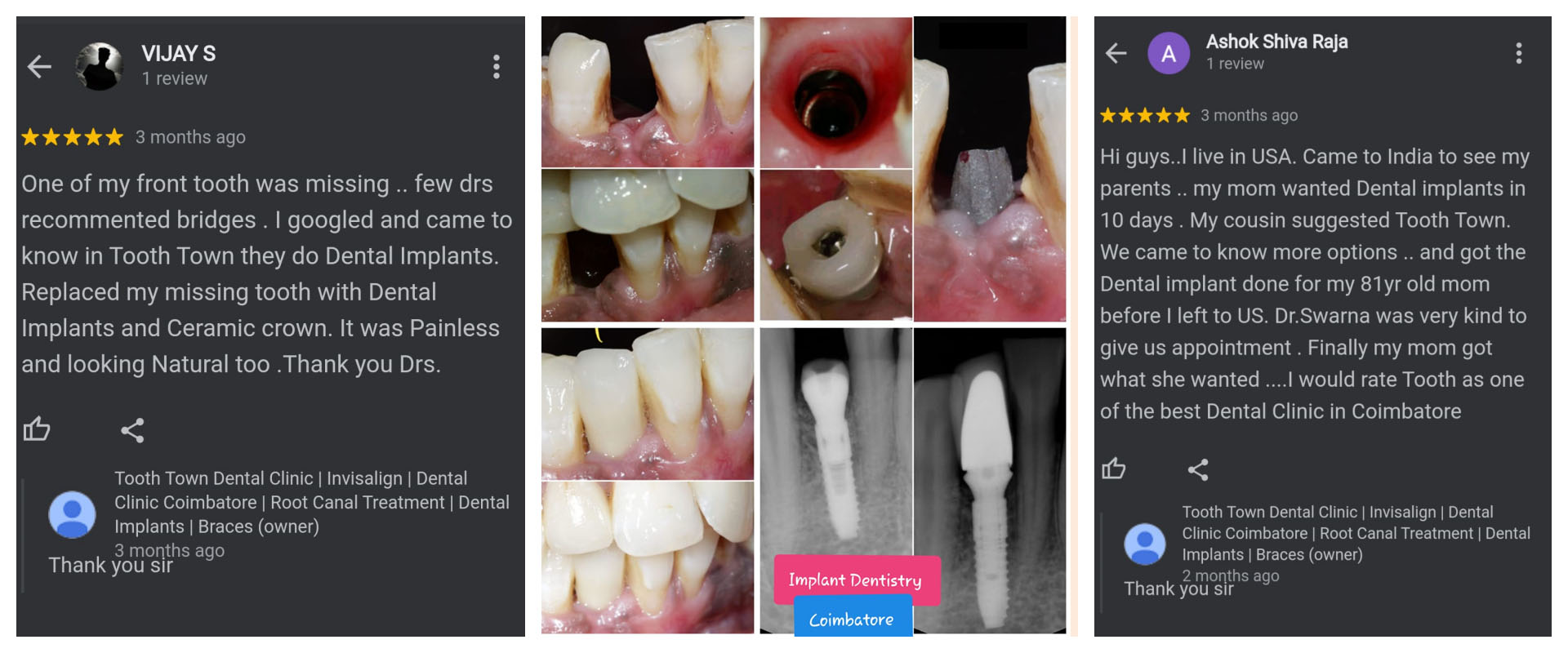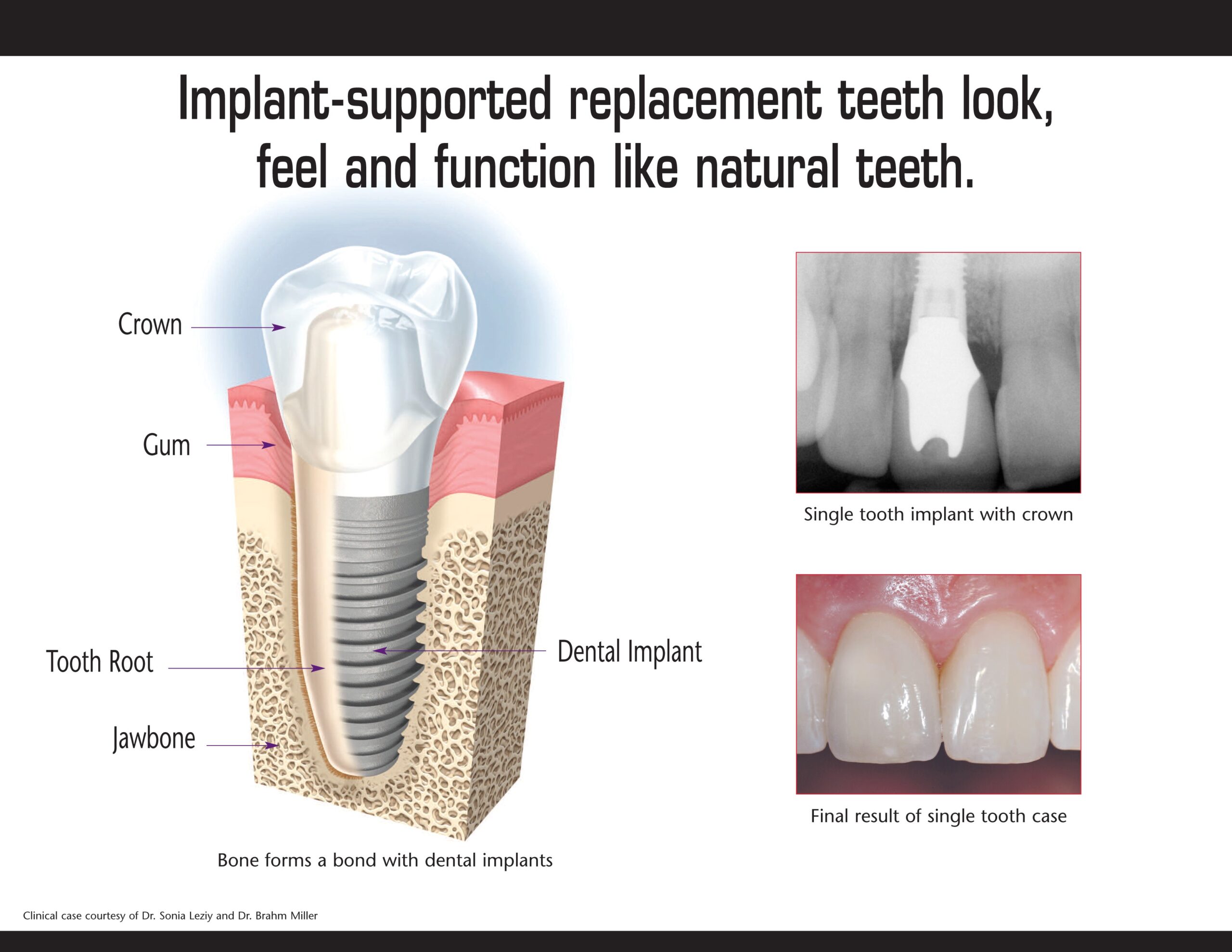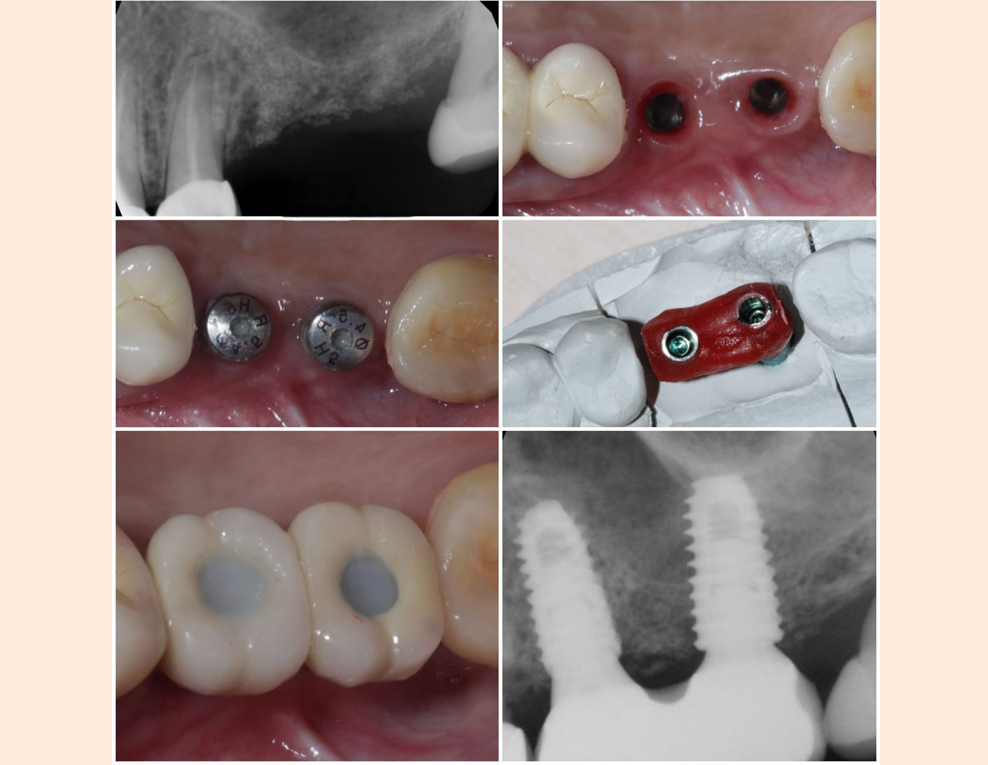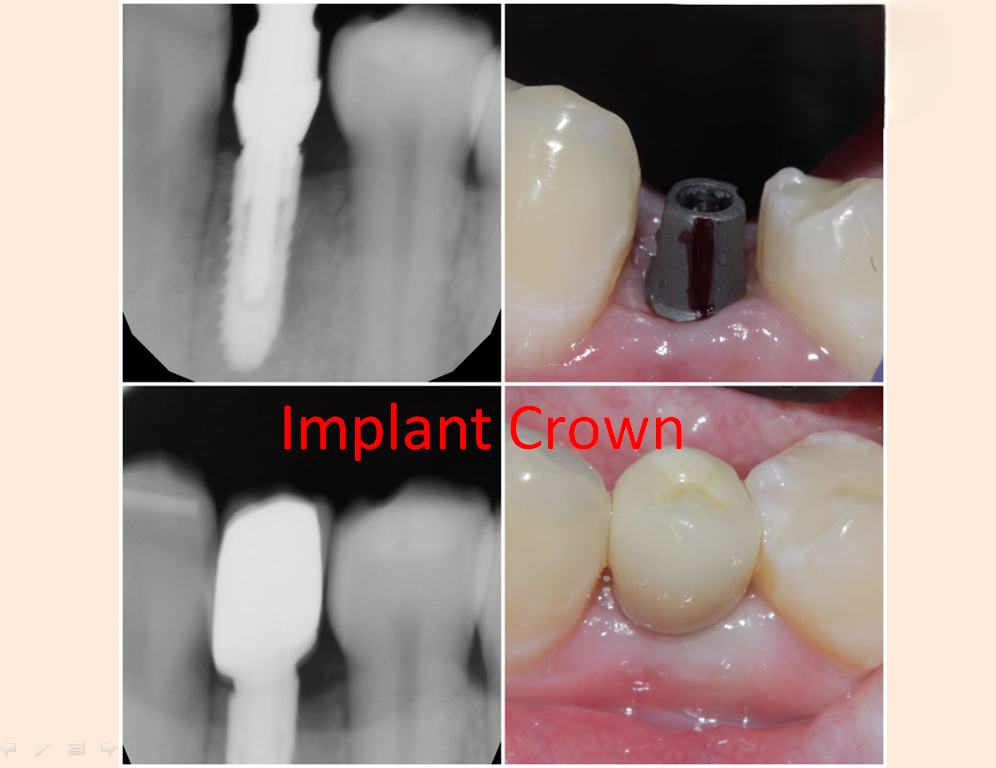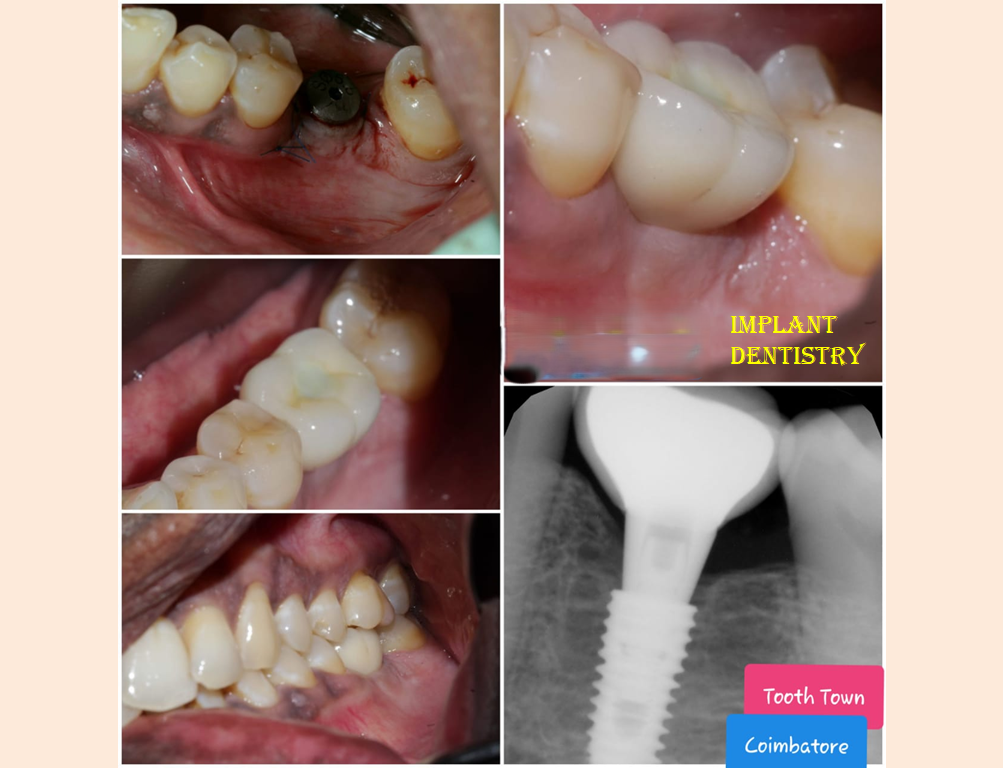Toothtown Clinic offers the best dental implant treatment in Coimbatore, India. We are specialized in dental implants and restoring the teeth with latest technology and affordable cost. Dental implants are a blessed solution for replacing missing tooth.
An implant mimics the root of natural tooth and the crown placed above implants also as crown of natural tooth. A dental implant is inserted into the jaw bone in such a way to fuse with natural bone. Dental implants will allow you to perform confidently and enjoy all your regular activities of everyday life without worrying about your teeth.
Implant made of Titanium metal fuses to bone through a natural process of osseointegration. This union forms a strong and durable anchor for your new teeth making it a part of bone.
Dental implants replace tooth roots and stop bone loss that usually follows toothloss. Implants won't loosen like dentures or fail like bridges. Preserving bone structure preserves your appearance and your smile.
Dental Implants can be used not only to replace single tooth but aslo complete set of teeth with only 4 implants using All on 4 Concept
It’s a Long term solution with highest success rate. When properly cared, implants can last the rest of your life. That’s what makes implants a reliable permanent solution.They provide more benefits than other tooth replacement systems.
The visible part(crown) is custom made to match your shape and shade of your other teeth to enhance your smile- but the real beauty of dental implants lies deep in your heart.
Click to see the answer
Know about Implants
Fixed dentures, Crowns, Bridges or Dentures can be Implant supported. A dental implant is an artificial fixture, usually made of titanium, which is placed surgically in to the jaw bone to substitute for a missing tooth and its root. The process of receiving implants is generally comfortable and the implants literally become attached to the jaw bone with a great deal of retention. In most cases, they are comfortable and solid as your own teeth.
Most dental implants are secured in the jaw bone, providing a chewing surface almost as secure as that of natural teeth. Implants stimulate new bone growth in your jaw (osseointegration) locking the implant in place. Standardly for lower jaw, the implant is allowed to osseo – integrate and given crown after three months (approximately) and the upper jaw the implant is structured to crown or denture after five months as the upper jaw bone takes more time to osseointegrate. After the implant is osseointegrated, measurements are taken and the crown or denture is attached fixedly to the implant.
A standard dental implant has an Implant, a superstructure connected firmly to Implant – called an abutment, and the crown, which is to be fixed to the abutment. So, there are three firmly connected pieces in the dental implant for a tooth replacement. But there are also single piece implants.
Yes, if a tooth cannot be saved by a root canal treatment, the best alternative is to extract the tooth and to place a Dental Implant made of titanium. The dental implant can also be longer than natural tooth root, which assures a better stability and more surface area for osseo integration.
Most of the time, implants can be placed immediately after tooth extraction if the extracted tooth is not highly infected [Immediate (placement) Implants]. And if the immediately placed implants are been stabilized better (primary stability), the implants can also be loaded with temporary crowns immediately (immediate loading). And later according to the gum level, after three to five months the implants can be loaded with permanent ceramic crowns.
A good planning with proper investigations guides the dentist to place the implants at the right place in the available jaw bone. Dentist takes a proper history supported with the study models of your jaw and full mouth radiographs. A CT scan with markers might be necessary to know the accurate amount and quality of bone in the region of planned implant placement. Now with advancements, Guided surgery to place Implants with surgical stents are very beneficial for accurate placement without even opening of the gums and minimal post operative discomfort.
Yes, available bone is the most important criteria for planning a dental implant treatment. Normally when a tooth is extracted (except third molar i.e. wisdom tooth) it has to be planned even before extraction for a better replacement. So our first choice would be immediate implants to save the bone. This is why, if an implant is not placed more than a month on an extracted socket there are more chances for the bone around the extracted socket to resorb (reduction of bone or loss of bone). So there are less chances to place an implant in the future without grafting of bone from other places. So if immediate implants are not placed after tooth extraction, the best option is to do socket preservation grafting. There are artificial bone powder, gels and chips available which can be placed inside the extracted socket, so that the bone never resorbs but rather fills up the extracted socket. The grafted bone is most of the time covered with the guided tissue membrane (GTR), at the time of grafting, so as to guide the bone formation. In cases of delayed placement and where there is insufficient bone, bone grafts help in reconstruction of bone to receive an implant.
Yes. In certain regions an implant can be placed without any compromise in the size (length & width) of the implant. But in some regions where the bone has been resorbed to an extent, a short, wide implant can be placed. In few cases a block graft from other regions in the jaw might be necessary. In the upper molar tooth region, where the bone is very soft, bone resorption takes place faster after tooth extraction and the place is occupied by the maxillary sinus. In those cases a sinus lift and bone graft surgery can be done to make the region suitable to receive an Implant. The Sinus lift surgery may be done Directly through a window in the jaw bone or Indirectly through the implant prepared site. Implants can also placed at the same time of sinus grafting.
As of now, most of the dental implants are made of titanium for better osseo integration. And the abutment, where the crown gets seated is also made of titanium. So there is always a doubt with feel for the consumers that whether the metal would be seen anywhere when they smile. But now we have the abutment made of full ceramic and a matching crown also with full ceramic to get a better esthetic outcome.
Most people are good prospects to receive an implant. Chronic smokers and uncontrolled diabetics are the persons for whom the implant might get rejected. Any major systemic problem like (heart attacks) are to be thoroughly investigated before planning dental implants. People with very poor bone quality, osteoporosis and insufficient bone may not have the choice of dental implants.
It closely resesmbles a natural tooth with roots. With the dental implant we can chew well, as it is not going to move any time but if your oral hygiene level falls down, i.e., if you don’t maintain and clean the implants well or if you don’t have a regular dental checkups, there are more chances for tartar formation even on implant margins leading to periodontal gum infection and later bone resorption around the implants and finally failure. So a well maintained Dental Implant has the life of a natural tooth.
Implant supported bridge-for multiple adjacent missing teeth.
Implant supported crowns-for single missing tooth
Implant supported dentures-for completely edentulous arches.
- Permanent solution
- Improvement in speaking
- Natural function and look
- Improved facial appearance
- Prevention of bone loss
- No special care required
- Very sturdy and secure
- No diet restrictions
- Can be changed or updated
- Friendly Doctors
- Comfortable Office
- Affordable Pricing
- Family Friendly
- Convenient Location
- Little to no Wait Time
- Detailed Consultation
- Satisfaction Guarantee
- Accessibility
- Modern Equipment
- High-Quality Materials
- Best Treatment

